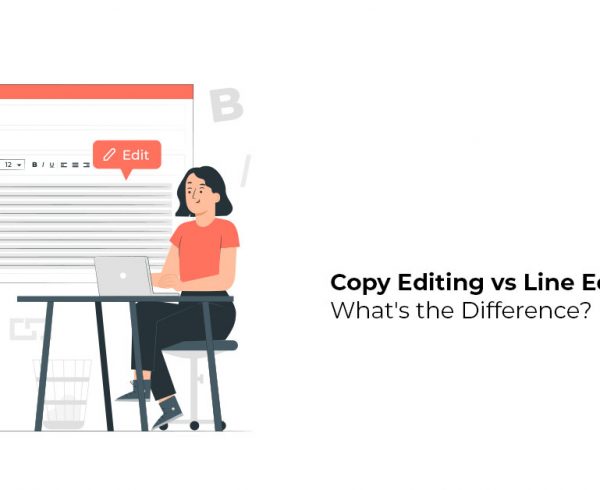All authors and researchers want their work to be published in a readable and easy-to-understand manner, reaching both the experts in the field as well as aspiring researchers.
However, not all researchers are well-versed writers, and therefore every publishing company has copy editing as a mandatory editorial service in their publishing process.
Table of contents:
– What is Copy Editing?
– Who is a Copy Editor?
– Types of Copy Editing
Traditionally, the copy editor would read a printed or written manuscript, manually edit the content for correctness and mark their corrections using copy editing language symbols for consistency.
Nowadays, with the evolution of digital technology, copy editors edit the content in a Word document or in a PDF with the ‘track changes’ feature. Editing the content in online platforms is the new scope of enhancement in this field for copy editing companies.
Also Read: Digital Prepress – Simplifying the Workflow for Publishers
What is Copy Editing?
Copy editing is the process of checking the written raw material in order to improve readability, maintain consistency and ensure error-free content.
Copy editing, which is the core process in an editorial service, includes analysis of the input, creation of style sheets, amendment of styles, language editing and polishing, and editorial proofreading before the content is sent for the next process.
Who is a Copy Editor?
In modern terminology, a copy editor is the grammatical gatekeeper of the publishing world. Besides an outstanding command of the language, copy editors need a broad sense of general knowledge, a knack for spotting errors, good critical thinking skills in order to recognize inconsistencies or vagueness, attention to detail, a sense of style and interpersonal skills for dealing with writers, other editors and designers. They must also set priorities and balance a desire for perfection with the need to meet deadlines.
Also Read: Best Practices in Editorial Project Management for Publishers
Types of Copy Editing
Copy editing is a combination of several tasks. Across the industry, copy editing comprises of the following processes:
Each of the processes is interlinked and sequential.
Pre-editing/Style tagging
Pre-editing is the initial process in copy-editing a module. The raw manuscript is checked for unwanted spaces and breaks, followed by applying tags to the manuscript. The references are set as per the in-house publisher’s style with regard to punctuation and placement of different elements, such as
- Author/editor group
- Publication year
- Title
- Journal/book names
- Volume and issue numbers
- Page range
- Publisher details
- Conference information
Citations are cross-linked with the references/tables/figures, and any unlisted and uncited references are identified, with appropriate queries raised to the authors.
Style editing
Style editing is the process of checking the piece of work for consistency in accordance with the publisher’s in-house style. The elements checked in this stage include-
- Abbreviations and acronyms
- Casing of titles
- Head levels
- Captions
- Spelling
- Hyphenation
- Punctuation
- Quotations
- Numerals and units
- Emphasis significance like bold and italics
- Word preferences based on publisher
- Typos/syntax
- Lists
- Extracts
- Equations and more
Language Editing
Language editing involves editing the content by reorganizing or restructuring a document. Checking the content for subject-verb agreement is the key to this task. This task also involves identifying any inconsistent parts of the content as well as any variances and correcting them without changing the author’s intent.
In any case, the approval of the author for any change is sought in the form of a query. The vague sentences are fixed by either rewriting the content or editing it. However, any passages that seem difficult to understand or inappropriate will be sent to the author to rewrite, so as to avoid infringing upon the author’s intent and changing the meaning.
Categories of copy editing
Every publisher categorizes copy editing into the following three elements:
- Light editing: Involves checking for the subject and verb agreement, spelling and typos.
- Medium editing: Identifying and correcting inconsistent parts of the vague sentences and rephrasing.
- Heavy editing: Involves rewriting the content by heavily editing the text without altering the author’s voice.
Based on the requirement of the publisher, the above-mentioned tasks are performed.
In conclusion
Copy editing has become a vital process in the publishing industry. Editorial services are incomplete without the copy editing process. Hence, all companies rate copy editing as a core editorial service. Copy editing companies play a crucial role in ensuring quality content.
We at Hurix have a handful of dedicated copy editors as part of our Editorial Services team and offer quality services to our reputed publishers. To go with the pace of industry standards, Hurix also renders AI support in core tasks for fast-track and efficient services.
Need to know more about our products and services? Drop us a note on marketing@hurix.com











